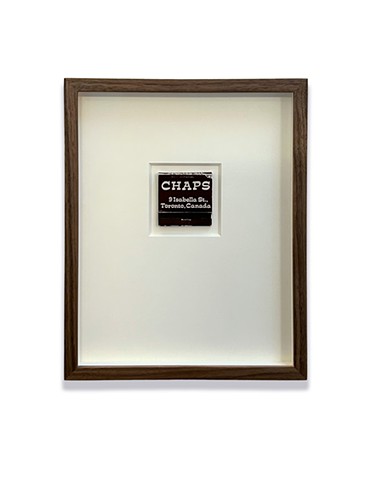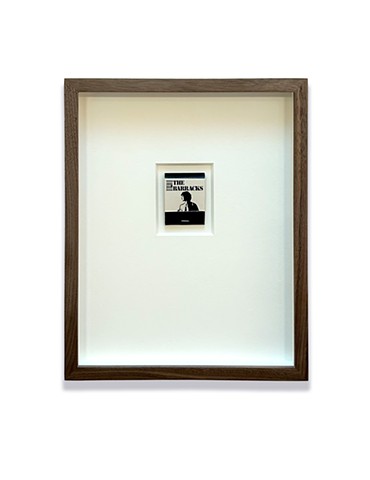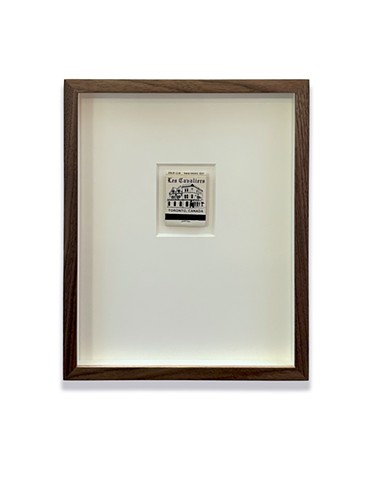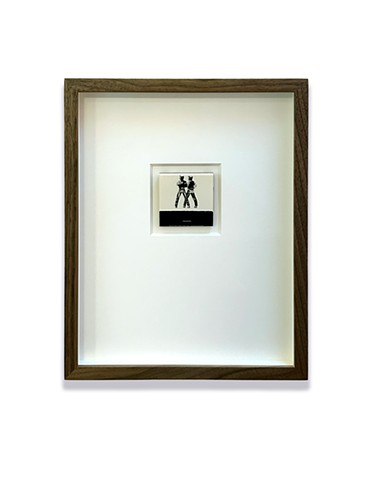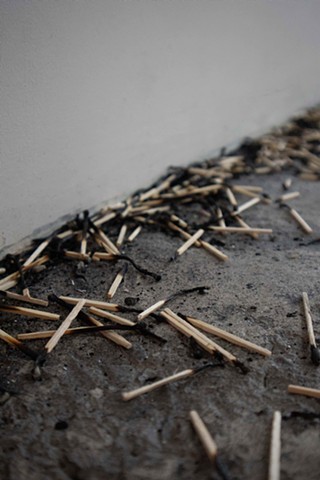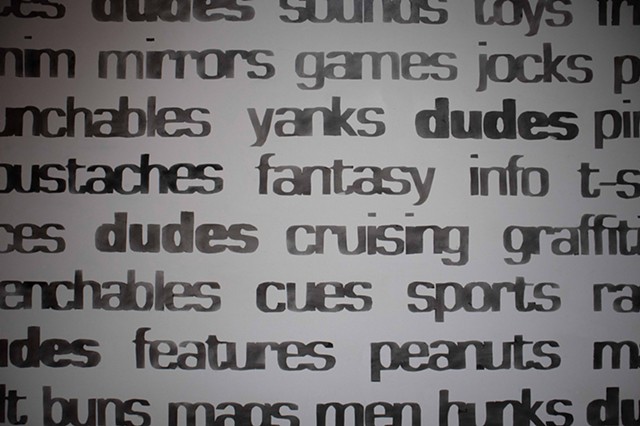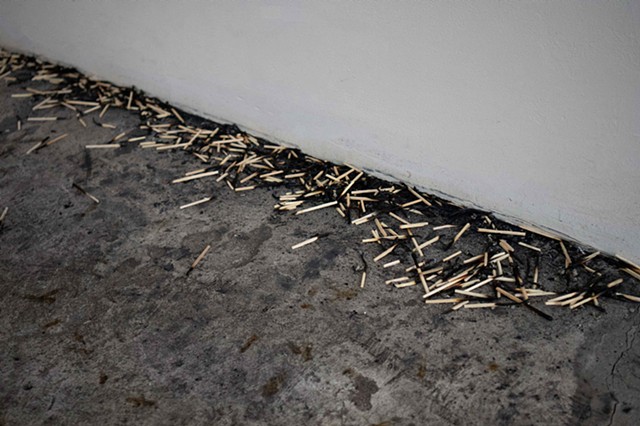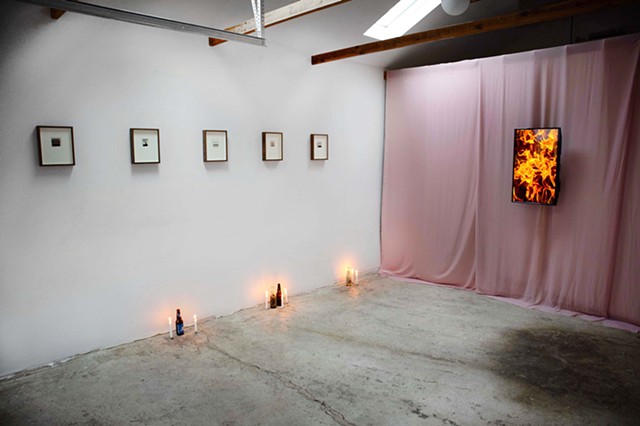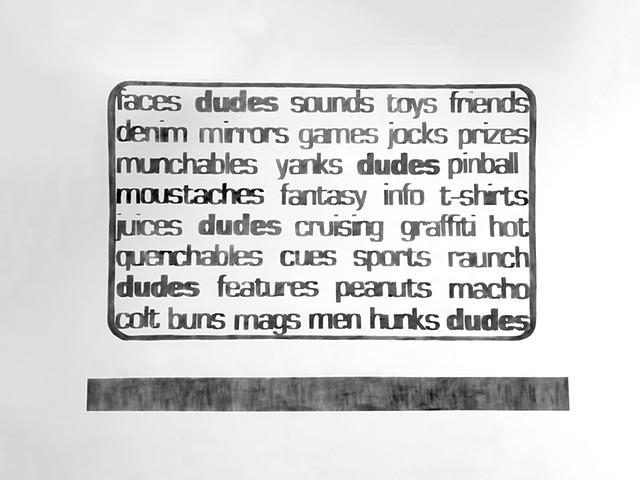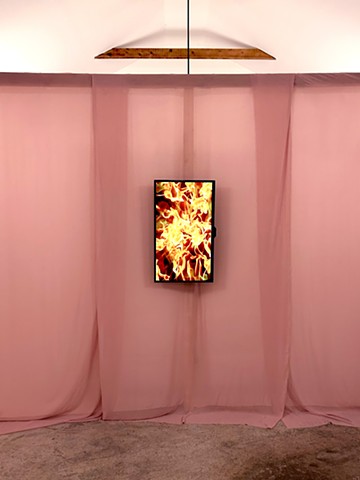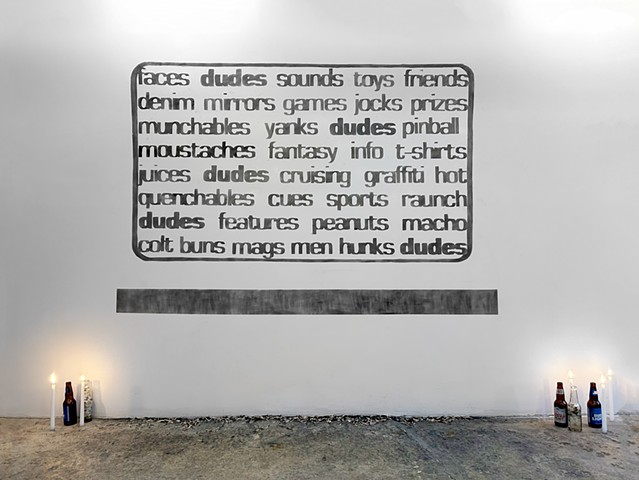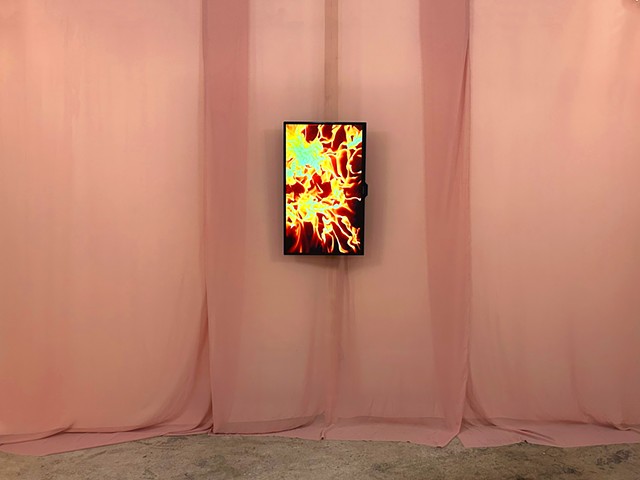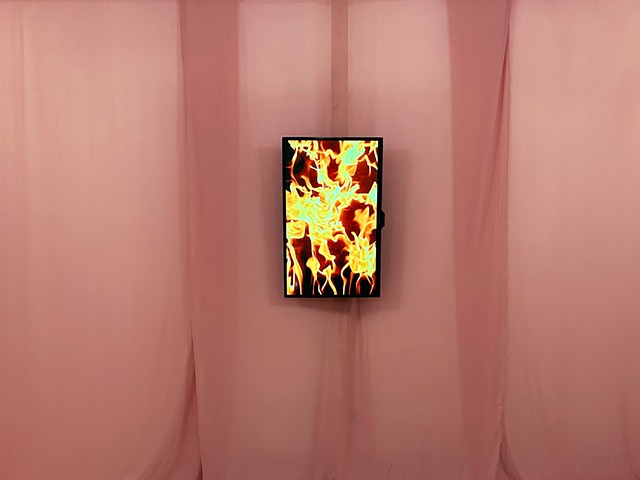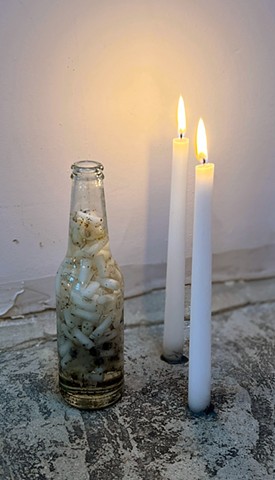Incendiary Objects
Tyler Matheson: Incendiary Objects
20 January 2024 – 4 February 2024
Public Reception: 3 February 2024, 6-9 PM
Incendiary Objects explores the endurance of queer resilience through material and visual culture. Spotlighting the phenomenon wherein queer individuals have historically transformed discrimination and segregation into forms of community by establishing underground networks and utilizing print media as channels for information and political action. While this exhibition references flames (both literal and figurative) that have permanently marked queer history, it also reinforces how queer liberation can catch like fire, spreading, multiplying and igniting anti-LGBTQIA+ rhetoric, legislation and opinion in its path.
Central to this exhibition is the symbolic use of matchbooks. Referencing Hal Fischer's 1977 book Gay Semiotics, which describes queer objects (matchbooks, hankies, t-shirts, jewelry, key rings, etc.) as codes, cues, symbols, and signals to initiate exchanges and imply shared understanding, Incendiary Objects accentuates the gay bar as the stage on which these codes and signals are performed. This exhibition seeks to celebrate queer intergenerational exchanges and coded communication through a rich history of queer material culture.
Incendiary Objects is anchored by five framed matchbooks that illuminate Toronto’s queer history. These matchbooks—one each from Dudes, The Barracks, and Les Cavaliers, and two from Chaps—burn with details of bars, dance clubs, restaurants, and bathhouses that have long since closed. These venues fostered connection, social interactions, organizational community efforts, and expressions of both fleeting and enduring intimacy.
In contrast to the histories of gay bars in Toronto, this exhibition examines a tragic incident that left an indelible mark on collective queer memory. On June 24, 1973, a blaze engulfed New Orleans gay bar, the UpStairs Lounge, and claimed the lives of thirty-one men and one woman marking the largest mass murder of queer people until 2016. The UpStairs Lounge Fire sparked an inferno that not only consumed lives but also laid bare a world fraught with toxic prejudice; the aftermath was marked by families hesitant to claim their loved ones, the Catholic Church's refusal of proper burial rights, and the city's indifference to survivors. Yet, the fervent activism that ensued proved indispensable to the emergence of a nascent gay liberation movement.
Queerness, like fire, defies containment by the modern nation-state; ideas and desires transcend borders and bind us across time and space. Underground spaces and communities have proven vital for queer world-building, allowing marginalized individuals to construct a lexicon of symbols, codes, and language for seeking, communicating, and recognizing one another. Despite the challenges faced, queer communities have forged languages, spaces, houses, and families—elements extinguished under heteronormativity. Incendiary Objects prompts reflection on experiences of queer resilience and survival in the face of hate and destruction.
With references to queer histories in Toronto and beyond, Incendiary Objects pays homage to the transformative flames of queer politics and history that have shaped our queer present and futures.
“Survival. Gay pride took a quantum leap forward throughout North America in 1969, the year the gay liberation movement marks as its symbolic birth. It was the year that street queens and other bar-goers responded in an unexpected way to an harassment visit by New York policemen to a Greenwich Village bar on Christopher Street called the Stonewall Inn. The customers fought back, demonstrated, threw things at the police, distributed flyers and experienced, for the first time, the astonishing sensation of resistance. The match, once struck, ignited a movement”.
– Ed Jackson & Stan Persky, Flaunting it!, 1982.
This exhibition was made possible by McMaster University's (2023-2024) Queer Artist in Residence program, organized by Professor Adrien Crossman. This year’s artist-in-residency program includes four Queer and Trans artists from across Turtle Island whose practices rely heavily on material exploration, weaving form and concept within the framework of Queer / Trans histories and aesthetics.
Orchid Contemporary is located on the traditional territories of the Mississauga and Haudenosaunee nations. These territories are covered by the Upper Canada Treaties, protected by the “Dish with One Spoon” wampum belt, which acknowledges the mutual agreement to come together to share and protect the land in the lower Great Lakes. The Dish symbolizes the land, its resources, and the creatures we share them with. The spoon signifies that we are to take turns eating from the dish and only to take what we need, emphasizing the importance of sharing responsibly, to ensure the dish is never empty. Acknowledgements such as these are limited in what they can offer, however, they can act as an important step in holding space in the recognition of Indigenous peoples who have resided on this land since time immemorial and to reflect on the colonial violence inflicted upon these peoples both past and present.
The artist would like to acknowledge Superframe and the Superframe Framing Fund, The ArQuives, Craig Jennex, Adrien Crossman, and Dominic Pinney for the support of this exhibition.
This exhibition was generously supported by Ontario Arts Council funding.
